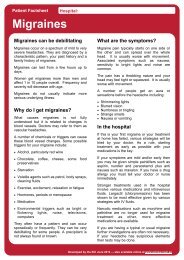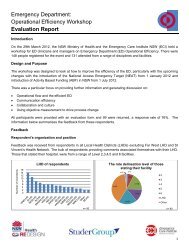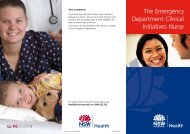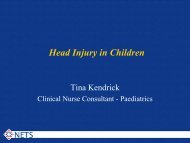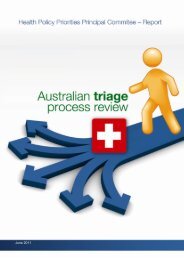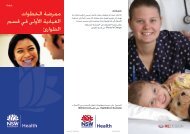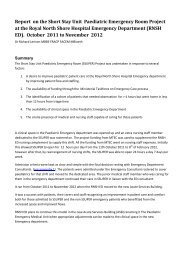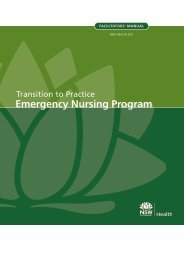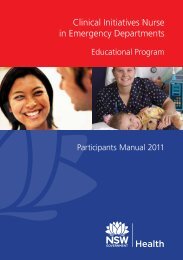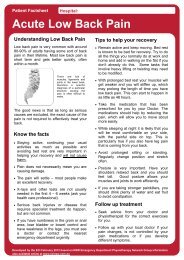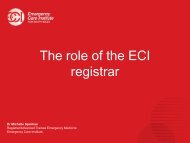Emergency Department Models of Care 2012 - NSW Health
Emergency Department Models of Care 2012 - NSW Health
Emergency Department Models of Care 2012 - NSW Health
- No tags were found...
Create successful ePaper yourself
Turn your PDF publications into a flip-book with our unique Google optimized e-Paper software.
Benefits <strong>of</strong> the model■ Dedicated staff focus on efficient quality care for non-complex patients■ Overall improvement in the delivery <strong>of</strong> patient care (Ieraci et al, 2008; O’Brien et al, 2006;Quattrini et al, 2009)■ Decrease in did-not-waits (Combs et al, 2006 &; Ieraci, et al, 2008)■■Higher incidence <strong>of</strong> patient discharges within 2 hours as compared to EDs with no FastTrack (Considine et al, 2008)Reduce waiting time to treatment and average length <strong>of</strong> stay (Ieraci et al, 2008; O’Brien etal, 2006; Quattrini et al, 2009)■ Increased throughput <strong>of</strong> lower acuity patients (Wilner et al, 2010)■■■Provides an environment where patients are assessed and treated away from the acutecare areaTreatment protocols promote patient safety and allow for nurse-initiated management <strong>of</strong>low acuity patients who meet a well-defined criteriaUtilising the Nurse Practitioner, Physiotherapist or another clinical provider to provide carefor appropriate Fast Track patients allows medical staff to focus their attention on moreurgent and complex patients – appropriate Fast Track patients may have all their care,including discharge, completed by that one provider.Challenges ■ Patients that do not fit the fast track inclusion criteria being placed in the MOC when theED is busy. This blocks the fast track with inappropriate patients who take longer than 2hours to discharge, rendering the model ineffective.■■■Not having senior decision-making staff allocated and dedicated to the MOC. Withoutsenior decision-makers who can discharge patients, the model is not effective inimproving patient flow.Some EDs have a culture that believes lower acuity patients should have to wait until allhigh acuity patients are seen.Fast track does not operate during the night.Case for ImplementationTo assess the need for implementation or the refinement <strong>of</strong> this model in your ED, considerthe following:■■■■■Does your ED experience inefficient patient flow for patients with minor illness or injuries?What is the average length <strong>of</strong> stay (especially in discharged category 3–5 patients)?How is your ED performing in triage to treatment times (especially in discharged category3–5 patients)?What percentage <strong>of</strong> patients ‘did not wait’ in your ED?Does your ED experience lower acuity patients blocking acute care beds?PAGE 32 <strong>NSW</strong> HEALTH <strong>Models</strong> <strong>of</strong> <strong>Emergency</strong> <strong>Care</strong>




